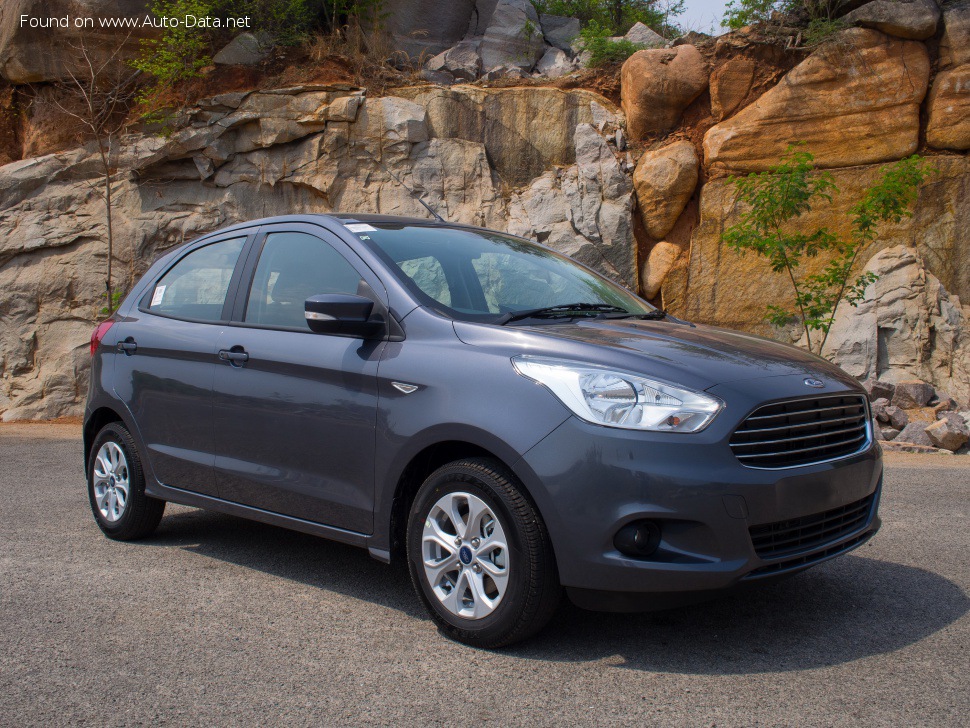Everything you need to know about specifications and performance - Ford Figo 2015 - 1.5 TDCi (100 Hp)

Overview:
What is the engine capacity of a Ford Figo 2015?
The engine capacity of the Ford Figo 2015 is 1498.
Ford Figo 2015 How many horsepower?
The engine power of the Ford Figo 2015 is 100 Hp @ 3750 rpm..
How much gasoline does a Ford Figo 2015 consume?
The Ford Figo 2015 consumes 4.1 liters of gasoline per 100 km
General:
Brand: Ford
Model: Figo
Generation: Figo II
Modification (Engine): 1.5 TDCi (100 Hp)
Start of production: 2015
End of production: 2018
Powertrain Architecture: Internal Combustion Engine
Body type:Hatchback
Seats: 5
Doors: 5
Engine:
Power: 100 hp @ 3750 rpm.
Power per litre: 66.8 hp/l
Torque: 215 nm @ 1750-3000 rpm.
Engine displacement: 1498
Number of cylinders: 4
Engine configuration: Inline
Number of valves per cylinder: 4
Fuel injection system: Diesel Commonrail
Engine aspiration: Turbocharger, Intercooler
Engine oil capacity: 3.8 l
Coolant: 5.8 l
Engine layout: Front, Transverse
Compression ratio: 16:1
Performance:
Fuel Type: Diesel
Fuel consumption (economy) - combined: 4.1 l/100 km
Acceleration 0 - 100 km/h: 12.1 sec
Acceleration 0 - 62 mph: 12.1 sec
Maximum speed: 175 km/h
Acceleration 0 - 60 mph: 11.5 sec
Space:
Trunk (boot) space - minimum: 257 l
Fuel tank capacity: 40 l
dimensions:
Length: 3886 mm
Width: 1695 mm
Height: 1525 mm
wheelbase: 2491 mm
Front track: 1492 mm
Rear (Back) track: 1484 mm
Ride height (ground clearance): 174 mm
Minimum turning circle (turning diameter): 9.8 m
Powertrain, Suspension and Brakes:
Drivetrain Architecture: The Internal combustion Engine (ICE) drives the front wheels of the vehicle.
Drive wheel: Front wheel drive
Number of gears and type of gearbox: 5 gears, manual transmission
Front brakes: Ventilated discs
Rear brakes: Drum
Assisting systems: ABS (Anti-lock braking system)
Steering type: Steering rack and pinion
Power steering: Electric Steering
Tires size: 175/65 R14
Wheel rims size: 14
Front suspension: Independent, type McPherson with coil Spring and anti-roll bar
Rear suspension: Semi-independent, coil Spring
See also

Other generation.
Its production began in 2018 until 2021

Same production year and almost the same engine capacity.
Its production began in 2015 until 2019

Write a comment